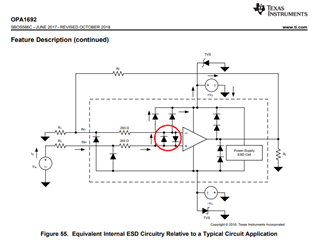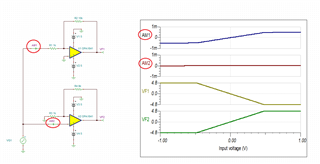Other Parts Discussed in Thread: OPA2134, OPA2197, OPA1642
I use OPA1692 to connect multiple audio amplifier circuits with different gains in parallel. That is to accommodate all input levels. The input sides of multiple amplifier circuits are connected to each other and are not switched by a switch. Therefore, all amplifier circuits operate at the same time for all inputs.
For example, I choose a small gain amplifier circuit output for large inputs. At that time, the output of the unselected amplifier circuit with a large gain is saturated.
I measured the audio distortion, but the amplifier circuit with saturated output exacerbates the distortion of the audio signal on the input side.
I tried the amplifier circuit configuration with inverting, non-inverting, instrumentation amplifiers, but the circuit configuration had no effect. I think that when the output is saturated, it has some effect on the input side. And that seems to happen when Opamp's architecture is Bipolar and not when it's FET.
If the output is saturated
1. What is the mechanism behind this problem within Opamp? The distortion degradation on the input side is not monotonous with respect to the input level.
2. What is the impact of Opamp's architecture?
3, I want to use the bipolar type because of noise. Is there a way to avoid distortion leakage to the input side? Due to CPU limitations, it is difficult to switch the amplifier circuit on the input side or switch the gain, so I would like to solve this problem with hardware alone, without using software.
The power supply is used at ± 5V.
Best Regards,
Yukio Oyama



